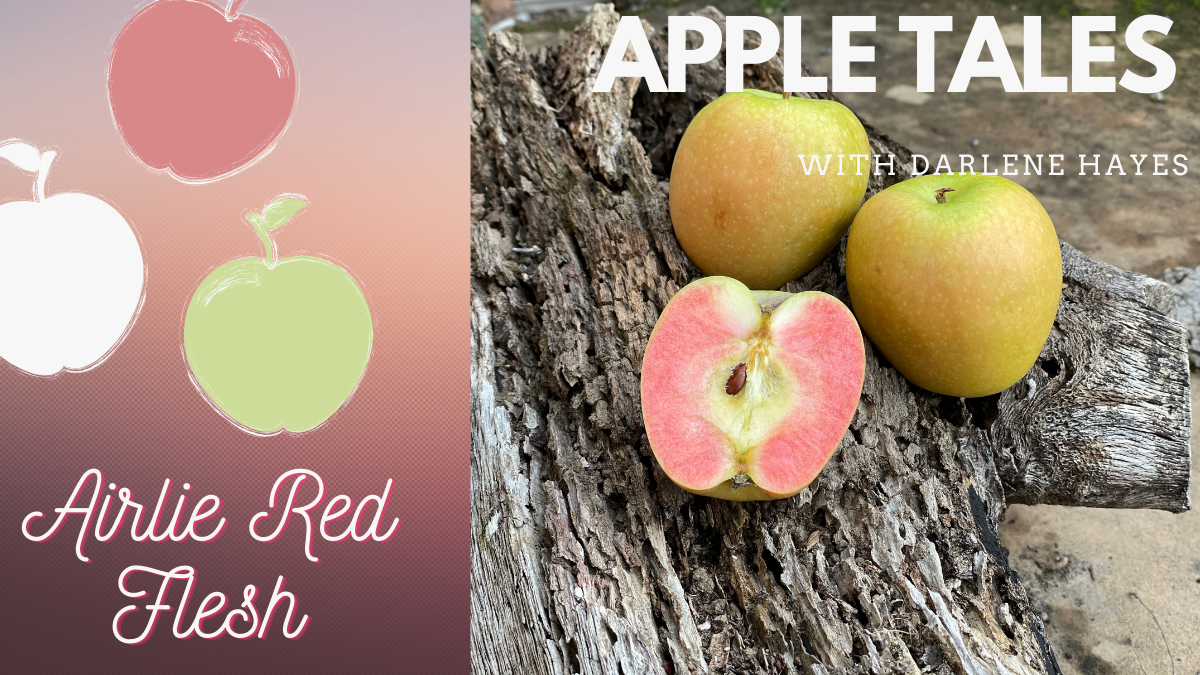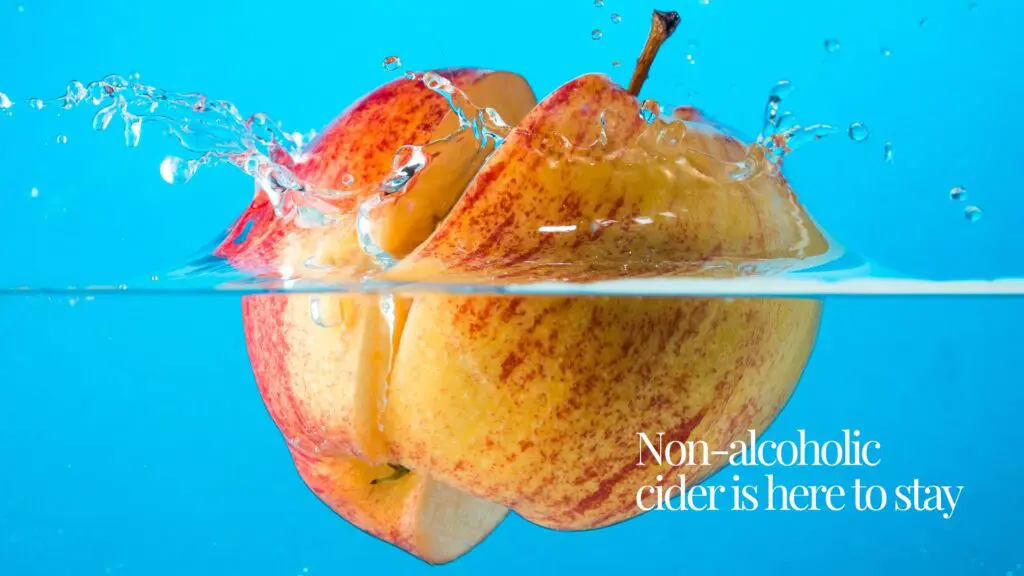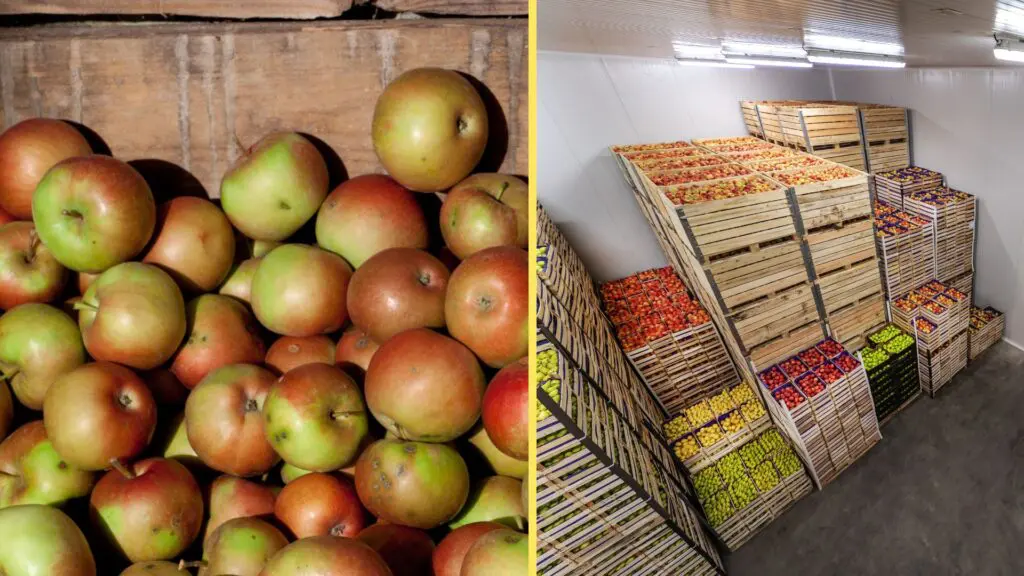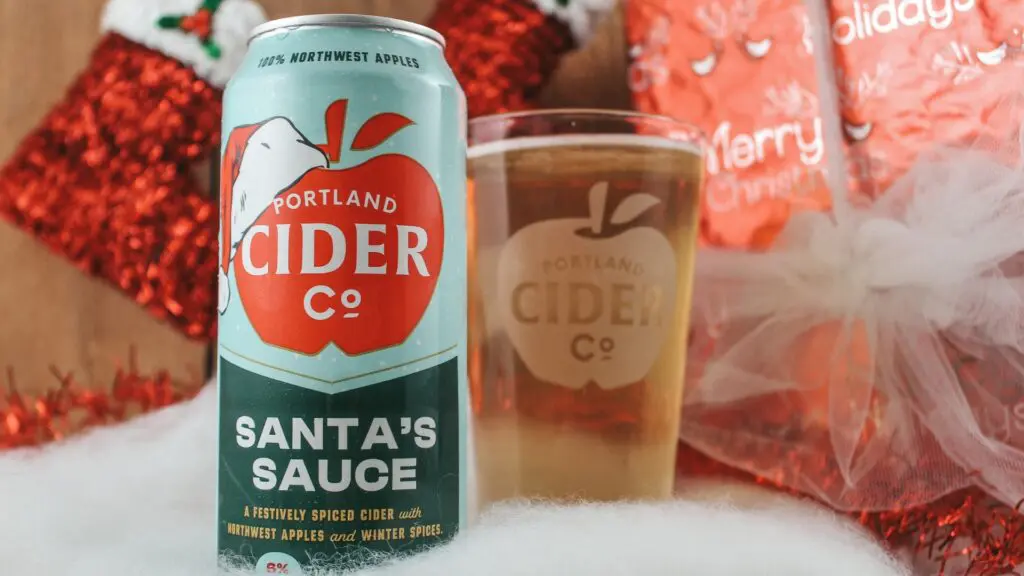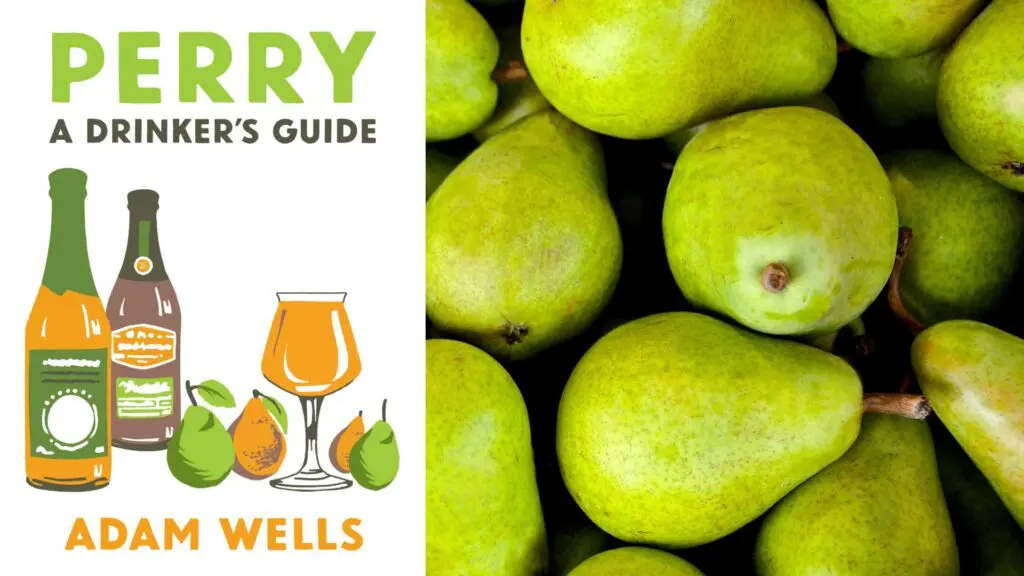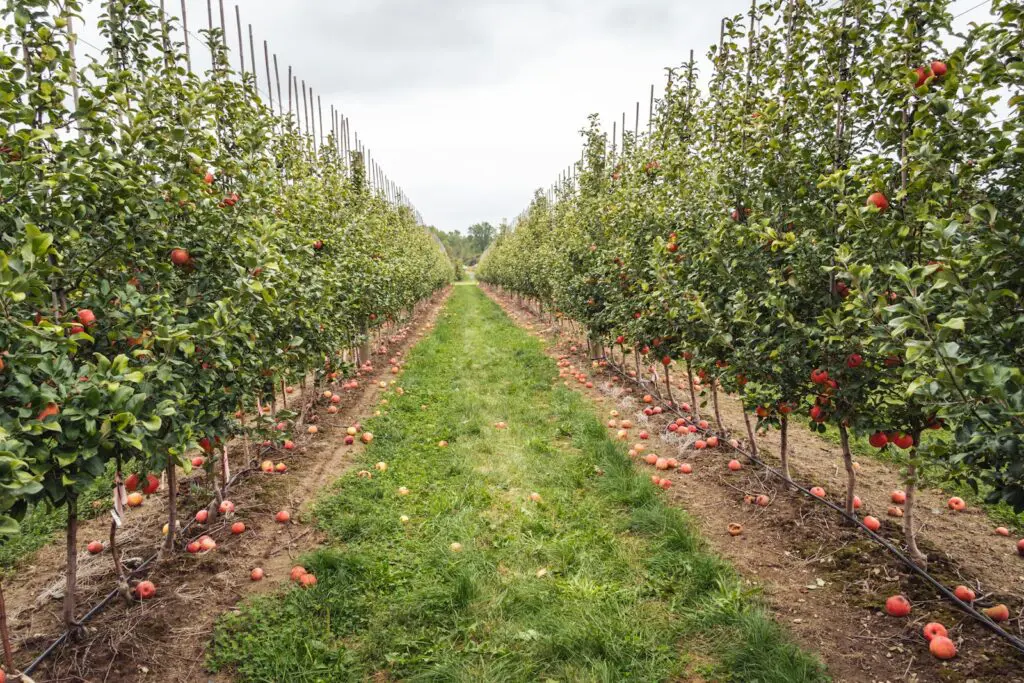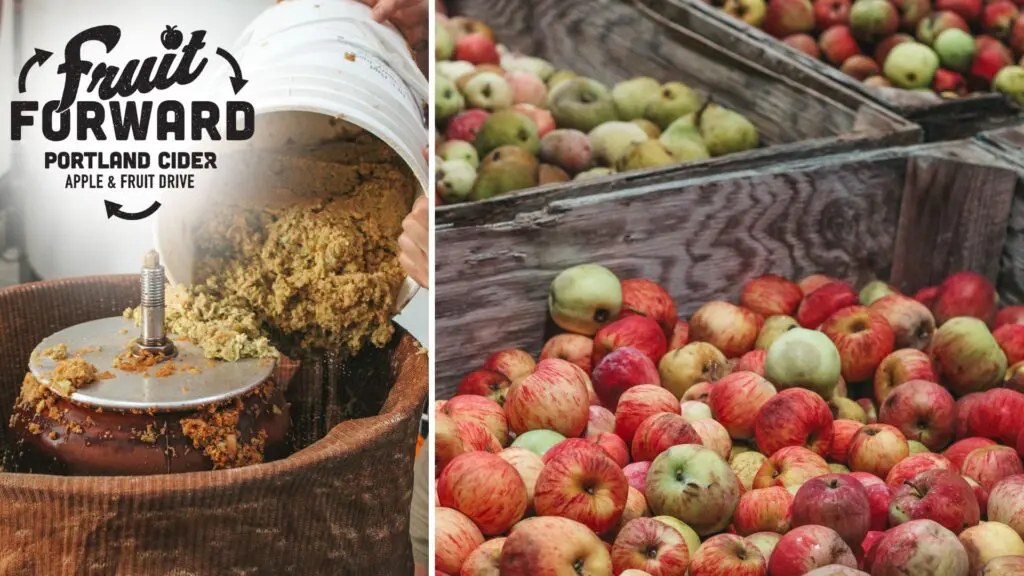There is something a little fascinating about red-fleshed apples. Red flesh is so unexpected, especially if the apple’s skin is yellow or green, giving us no hint of what might be hiding inside. Airlie Red Flesh is just such an apple.
It was found in Oregon, a lone tree growing in the rolling semi-forested hills between the tiny towns of Airlie and Kings Valley, north and a little west of Corvallis. Some stories say the first to notice it was Lucky Newell (1928-2016), who owned the land from the 1950s until he sold it in 1966. He probably saw it as just a novelty, comparing the color inside to that of his wife Audrey’s lips, since he doesn’t seem to have brought it to the attention of anyone outside of the family. It was discovered again in the 1980s, by pomologist William Schutz — or by local farm worker Thomas Kimzey who showed it to Schutz, depending on who’s telling the story. By the 1990s, it was being grown by apple enthusiasts in various parts of the Pacific Northwest and beginning to attract some commercial success as well.
How, though, did it end up in that field to begin with? Apples with red flesh aren’t complete unknowns, but they are hardly common. Before Lucky Newell bought that bit of land, it was owned by Frank Story (1895-1956) who spent his whole life farming there. Ram Fishman, owner of Greenmantle Nursery in Garberville, Calif., thinks that the apple on Story’s farm might have originated with the northern California apple breeder Albert Etter (1872-1950).
This is not as far-fetched an idea as it might sound. Etter had been breeding red-fleshed apples for many years, with Pink Pearl as his most noted red-fleshed success. According to an article written by Fishman in a 1995 edition of the Fruit Gardener, the magazine published by the California Rare Fruit Growers Association, Etter sent scions of a number of his apples to Quentin Zielinski (1919-1967) at Oregon State University in Corvallis. Perhaps, one of those scions was for the apple now known as Airlie Red Flesh. And just maybe, Zielinski gave a scion to Frank Story.
This sounds kind of crazy though, since Story was a nearby farmer, and there isn’t any documentation that would suggest he had any particular relationship with Zielinski. That being said, the apple itself offers some intriguing support for Fishman’s notion.
There are a couple of genes that cause apples to create redness, either in the skin or the flesh. The activity of those genes is, in turn, controlled by other cellular chemicals that occur in two distinct versions. One version, type 1, tells the apple to make pigment (anthocyanins) in all its various parts — leaves, stems, flesh and skin. A second version, type 2, says “Hey, only make pigment in the flesh. Leave the leaves green, the stems green/brown and the skin yellow.” A classic example of a type 1 apple is Malus niedzwetzkyana, introduced to the U.S. in the late 19th century by plant breeder Niels Hansen (1866-1950).
Etter used a type 2 apple for his breeding work, Surprise, which has pale yellow skin and no evidence of any red pigment in its leaves or bark, only in its flesh. It is one of the parents of the apple, Pink Pearl, as well as countless other red-fleshed apples bred by Etter that were never introduced to the public. That Airlie Red Flesh is a type 2 apple like Surprise, and unlike M. niedzwetzkyana, suggests they are related, and there is something a little romantic about the possibility that they could be.
The final piece of this apple’s story concerns its various names. Airlie Red Flesh seems to be the name given to it by William Schutz. A second name, Hidden Rose®, is a trademarked — not patented — name made up by the owner of Thomas Paine Farms located just outside of Kings Valley, Ore. Then there is Mountain Rose, a name that might have arisen to get around the trademark, and yet sound prettier than Airlie Red Flesh. They are, for all intents and purposes, the same apple.
Although Airlie Red Flesh is grown in a number of states, often under one of its aliases, it is cidermakers in the Pacific Northwest that have particularly embraced it. Most of the examples I tasted recently were various shades of pink and true rosé ciders with noticeable, but balanced, acid. It is probably the anthocyanins that elicit the flavors of various red fruits, for in general the more red pigment retained in the cider the greater the range of red fruit flavors like red currant or raspberry. The exception to this was the traditional method cider from Alpenfire where some of those primary fruits had matured into the bready autolytic flavors that come with time on the lees.
Double Mountain – Red Fleshed Rosé – Hood River, ORE
Cranberry, pear, red cherry, watermelon, raspberry; sparkling; (a blend of Mountain Rose and Pink Pearl)
2020 | 5.9% ABV
Art + Science Cider & Wine – Mountain Rose – Sheridan, ORE
Plum skin, yellow apple, just ripe pear, bread dough, toasted almond, VA; sparkling
2018 | 7.2% ABV
Alpenfire Cider – Glow Airlie Red Rosé – Port Townsend, WASH
Red currant, red plum, raspberry, strawberry, lemon, green apple skin; sparkling
2018 | 8% ABV
Alpenfire Cider – Cinders Méthode Champenoise Rosé – Port Townsend, WASH
Red currant, red plum, raspberry, lemon, brioche, bread dough; sparkling
2014 | 8.9% ABV

